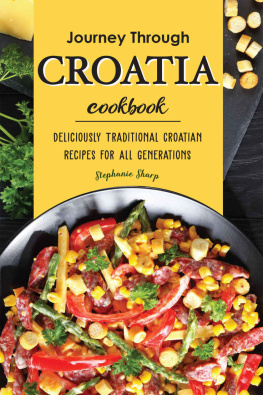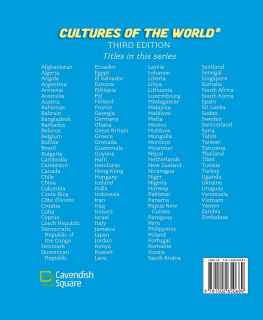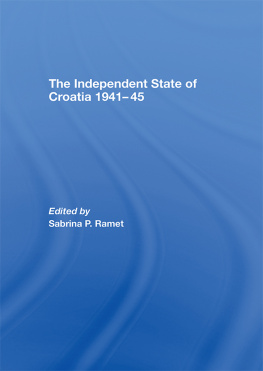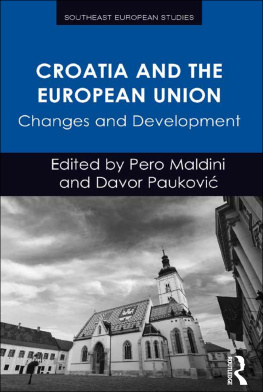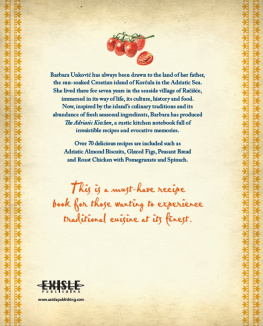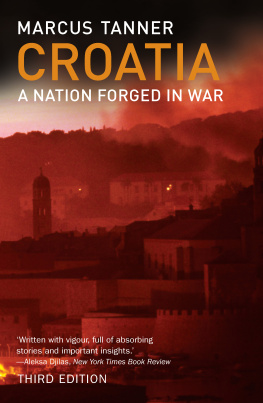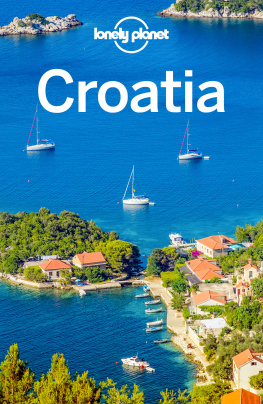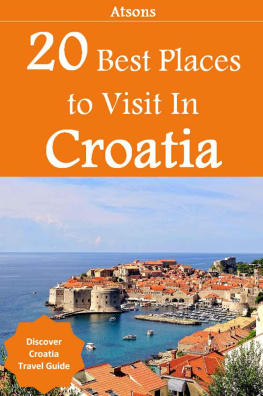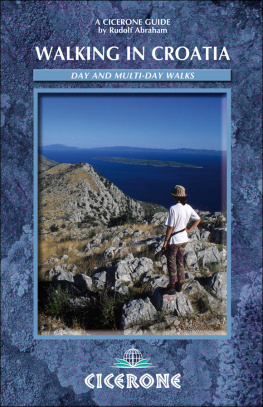
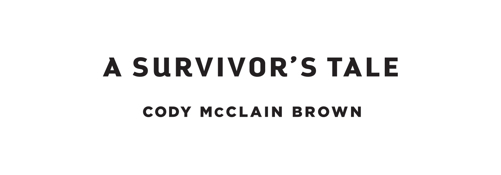
Chasing a Croatian Girl:
A Survivors Tale
Copyright 2015 by Cody McClain Brown All rights reserved.
Printed in the United States of America by CreateSpace.
No part of this book may be used or reproduced in any form without written permission of the copyright owner.
www.facebook.com/chasingacroatiangirlwww.facebook.com/Zablogreb
Twitter @smedj
ISBN-13: 978-1516959549 ISBN-10: 151695954X
Third Edition: August 2015
Book design by Walsh Branding.
Illustrations by Cody McClain Brown.
For Mara, so youll know how and why.
A NOTE FROM THE AUTHOR
This book is based on my real life experiences, but most of the names have been changed to protect the innocent. Some of the characters have been merged into one another, some of the places have been changed, others have been made up entirely, and most of the generalizations are exaggerated and should not be taken as the incontrovertible truth.
Just go with it. Laugh with me. Or at me.
CHAPTER 1
Croatia: Where Russia Isnt
The first night I met my wife was in a small town in rural Oklahoma. Shed said she was from Croatia. I thought that meant Russia. It happened to be one of the coldest nights of the year and our evening class in comparative politics had just ended. As I, and the other grad students hurried to our cars, I watched Vana walk away into the frigid distance, back across the campus, toward the apartments where all the foreign students lived. You could tell she was from Europetall and svelte, she was an elegant, passing shadow. With her hands shoved in her pockets and her head down, the strands of her long hair made halos underneath the street lights. Even her steps seemed to contain a level of sophistication missing in the blundering footfalls of us Okies who were in mid-stampede to the parking lot.
Given that it was freezing, I thought that the nice, gentlemanly, thing to do would be to offer her a ride. I also worried that such an offer would send shivers all over her creepy scale. Divided between the desire to be kind, and not wanting to come off as a weirdo, I drove off, and halfway to the corner decided to go ahead and offer her a lift. I doubled-back, driving in the way I imagined she was walking, but there was no sign of her. Like a ghost she had faded into the night. As I turned toward home, I thought: Oh well, shes from Croatia. She must be used to the cold.
________
I couldnt have been more wrong. As it turns out, Vana is actually from Split, an ancient city on the Adriatic Sea. Not only is Split rarely freezing cold, the average temperature is 67 F, its also one of sunniest places in Europe.
Of course I, like most Americans didnt really know where or even what Croatia was. As we can see from my example, even those of us in graduate school may need a lesson in geography. Then again, Ill also bet that most Croatians, or even Europeans cannot find Oklahoma on a map of America. So were even. Not really. The problem with my not knowing where Croatia was, was that I didnt even know I didnt know. I was convinced I knew where Croatia was: somewhere in RUSSIA! My deficiency in geographical knowledge was coupled with an absurd confidence. Awesome! America!
Part of the blame for this ignorance is the U.S.s own geography. We live between two, huge-ass oceans and tend to lump everything on the other side into the category of over there. Growing up during the Cold War didnt help matters much either. The reductiveness of the bipolar political world made geography a cinch. If it was European and Communist, it was Russian, meaning anything and everything behind the Iron Curtain had abysmal winters, long lines, and sad, sad people yearning to wear Levis and eat McDonalds. My mental map of the Cold War world was partitioned between free, colorful, bright democracies and the dark repressive spaces of the Evil Empire. The specifics didnt matter. So when Vana told our class she was from Croatia, I figured, Croatia, Chechnya, Dagestan, Azerbaijan, Yugoslavia, Serbia, Siberia, Belarus, Armenia, Bulgaria, Ukraine, Moldovaall the same. All former Communist. All poor. All war-torn. All once part of some bigger shitty something that broke into a billion tiny shittier little somethings.
It wasnt even until I happened to be looking at an old map of the Soviet Union from a 1988 issue of National Geographic , a month or so later, that I: a) noticed that the socialist federation Croatia had once been a part of, Yugoslavia, wasnt even part of the Soviet Union; And b) that Croatia IS. ACROSS. FROM. ITALY! What? Italy? Followed by this epiphany: Wow. Its probably not even that cold there . (I graduated with honors ladies and gentlemen! With. Honors!) Intrigued more by my own ignorance than any real interest in Croatia, I began doing a bit of research.
A few days later I was able to put my knowledge to good use. During our evening classs 10-minute break, while Vana and a few other students were smoking, someone asked her about Croatia, Yugoslavia and Communism. In the question was the assumption that Croatia was in or part of Russia. Hmph, morons. Vana tried to correct this assumption. I politely offered that actually, Croatia is right next to Italy and that during the Roman Empire it was the Roman equivalent of Florida, and even the Roman Emperor Diocletian, built his retirement palace on the coast. Vana looked taken aback. Pretty much, she said.
Over the semester I started to create a cognitive map of Croatia and the rest of Southeastern Europe. I began first by imagining Italy as a boot (original, I know), and Croatia being across from the backside of the leg, just below the knee and not quite taking up the whole calf. To the immediate north of the country is Slovenia, which is like the Canada of the Balkans: Cleaner. Colder. Lamer. Then you have Croatias Eastern neighbor, Serbia, which I imagined to be sort of like how Texas is to Oklahoma. Its bigger, a bit better known (and not in a good way), wilder, and probably a bit crazier. People know you dont mess with Texas. Below Croatia is Bosnia, and well everyone in the U.S. has at least heard of Bosnia. We know we once did something there somewhere with CNN. Then running along the western edge of Bosnia is Croatias pristine Dalmatian Coast, which I knew as Romes Florida and many Americans today know as the place Rick Steves, Bill Gates and Beyonc go and where HBO films Game of Thrones . Below the coast is Montenegro. Thats all I know about Montenegro.
Again, to be fair to my American compatriots, it is hard for most of us to understand the dynamics of national change that once afflicted all of Europe and still afflicts parts of Southeastern Europe. The United States has what many countries are lacking: continuity. With the exception of the Civil War, we have been one country since the late 18th century. Since coming over on the boat, all of my family members have been born all over America, but all IN America. Whereas my Croatian daughter, wife, mother-in-law, and her mother, great-grandma Julia, have all been born in the same place, but each in a DIFFERENT country. What? Seriously? Yes. Crazy! I know!
America is like Coke. Its the brand everyone knows. Since 1776 the United States of America has been the United States of America. While there has been ample growth in the U.S.s market share, it has, for over 200 years been branded America (apologies to Canada and Mexico). Croatia in that same amount of time has had issues with its name recognition and maintaining its brand identity.Growing up in the U.S. we just take our countrys stability and longevity for granted. Its hardfor us to understand or even comprehend that the lines on maps may have little meaning to much of the world, or that states rise and fall. We assume away the complexities of the world with a binary vision based on our own experience. Things are either here or there, us or them, normal orEur-O-pean. The more I learned about Croatia and the closer I grew to Vana, the weaker this diametric world view became. I began to see the world in more vibrant colors than the mundane gray I had assumed gathered on the edges of America.
Next page


